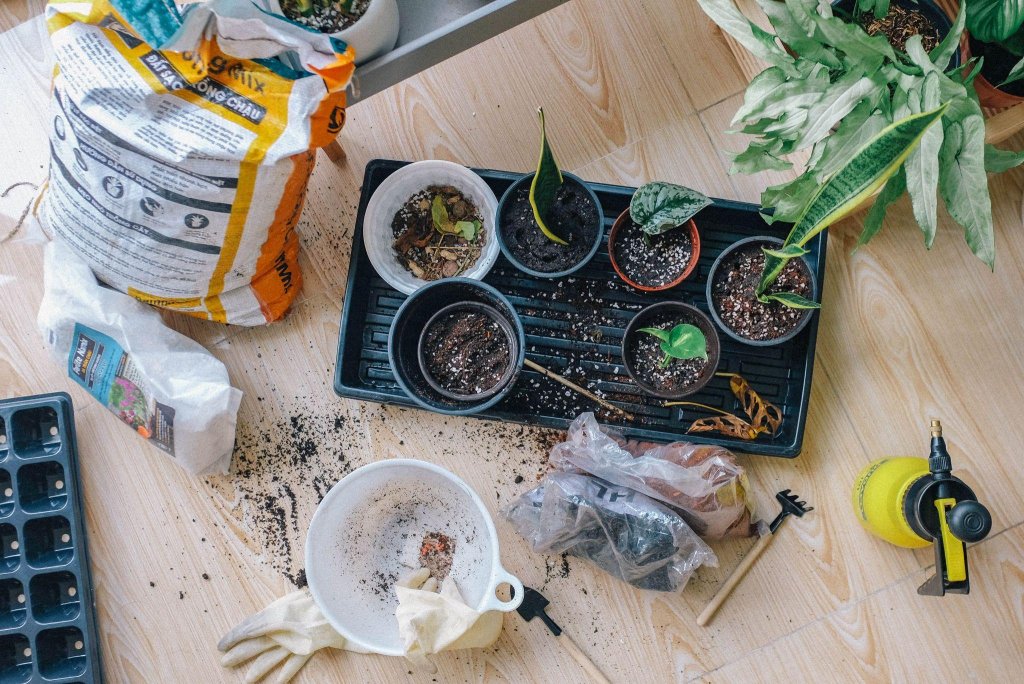Gardening is a popular hobby that people of all ages can enjoy. There are many ways to design a garden using various gardening methods, each with its benefits and drawbacks. While some people may prefer a more natural look, others may opt for a more structured and organized layout.
By understanding the different gardening methods, people can choose the one that is best for them and their needs. Keep reading to discover the types of gardening methods you can start using today.
Natural Gardening
Natural gardening uses natural materials and methods to grow plants. Natural gardeners use organic materials, such as compost and mulch, to fertilize and condition their soil. They avoid synthetic pesticides and herbicides and use natural methods like traps to control pests.
Natural gardening is the preferred method for growing fruits, vegetables, and herbs and is a great way to have a beautiful garden. However, gardeners can also use natural gardening to grow flowers and other ornamental plants.
Advantages of Natural Gardening
- Environmentally friendly
- Can be less expensive than other methods
- Easy to find organic materials
Disadvantages of Natural Gardening
- Time-consuming
- Some plants may not do well in an all-natural environment
Formal Gardening
Formal gardening uses straight lines, geometric shapes, and symmetry. Formal gardens are often orderly and began appearing in Europe during the Renaissance period. During this period, people began studying classical art and architecture, which influenced how they designed their gardens. You can find formal gardens in public parks and large estates.
Advantages of Formal Gardening
- Creates a sense of order
- Can be very aesthetically pleasing
Disadvantages of Formal Gardening
- Requires a lot of time and effort to maintain
- Can be expensive
Informal Gardening
Informal gardening is the opposite of formal gardening and uses curved lines, asymmetry, and naturalistic plantings. This method became popular in Europe during the Victorian era when people began to value natural beauty over symmetry.
Advantages of Informal Gardening
- Creates a relaxed atmosphere
- Can be less expensive and time-consuming than formal gardening
Disadvantages of Informal Gardening
- May appear unkempt
Cottage Gardening
Cottage gardening uses various flowers, vegetables, and herbs. This method became popular in Europe during the medieval period when people moved from rural areas into towns and cities. Cottage gardens were often small and located near the home, so gardeners could easily tend to them. Today, cottage gardens are still small but can be found in rural and urban areas.
Advantages of Cottage Gardening
- Creates a homey and inviting atmosphere
- Can be very aesthetically pleasing
Disadvantages of Cottage Gardening
- May require more maintenance than other gardening methods
Raised Bed Gardening
Raised bed gardening grows plants in above-ground beds. This method is popular with people who have limited space, such as those living in apartments or small homes. Gardeners can create raised bed gardens with wood, stone, or other material. The best way to water raised-bed gardens is in the morning and more deeply rather than more frequently.
Advantages of Raised Bed Gardening
- Can be used in small spaces
- Soil is less likely to become compacted
Disadvantages of Raised Bed Gardening
- Cost more money to build
Vertical Gardening
Vertical gardening grows plants upward on walls, trellises, or other structures. People often use this method in small spaces or to grow climbing plants, such as vines. Vertical gardens contain various materials, including wood, metal, and fabric.
Advantages of Vertical Gardening
- Creates more growing space in a small area
- Can be used to grow climbing plants
Disadvantages of Vertical Gardening
- May require more maintenance than other gardening types
Container Gardening
Container gardening uses containers, such as pots, barrels, or sacks, to grow plants. This method is popular with those who live in urban areas or have limited space for gardening. Container gardens can be placed on balconies, patios, rooftops, and even windowsills.
Advantages of Container Gardening
- Can be done in small spaces
- Soil can be controlled more easily
- Pests and diseases are less likely to affect plants
Disadvantages of Container Gardening
- Plants may require more water
- Container costs can add up
Hydroponic Gardening
Hydroponic gardening is a type of container gardening that uses nutrient-rich water instead of soil to grow plants. Commercial growers often use this method because it yields a high quantity of plants in a short amount of time. However, gardeners can also maintain a hydroponic garden on a smaller scale.
Advantages of Hydroponic Gardening
- Plants grown hydroponically often mature faster than those grown in soil
- Can be done in small or large spaces
Disadvantages of Hydroponic Gardening
- Requires more attention than other methods
Soilless Gardening
Soilless gardening uses materials other than soil to grow plants. This method is often used by those who want to avoid soil-borne diseases or pests. Soilless gardens contain various materials, including sand, gravel, vermiculite, and perlite.
Advantages of Soilless Gardening
- Less likely to be affected by pests and diseases
Disadvantages of Soilless Gardening
- Plants may require more water and nutrients than those grown in soil
Try One (or More!) of These Gardening Methods Today
While gardening has been around for centuries, the methods people use today have evolved. There are now many types of gardening, each with its benefits and drawbacks. Whether you’re a beginner or an experienced gardener, it’s essential to be aware of all your options to choose the best method for your needs. Which type of gardening do you want to try today?

